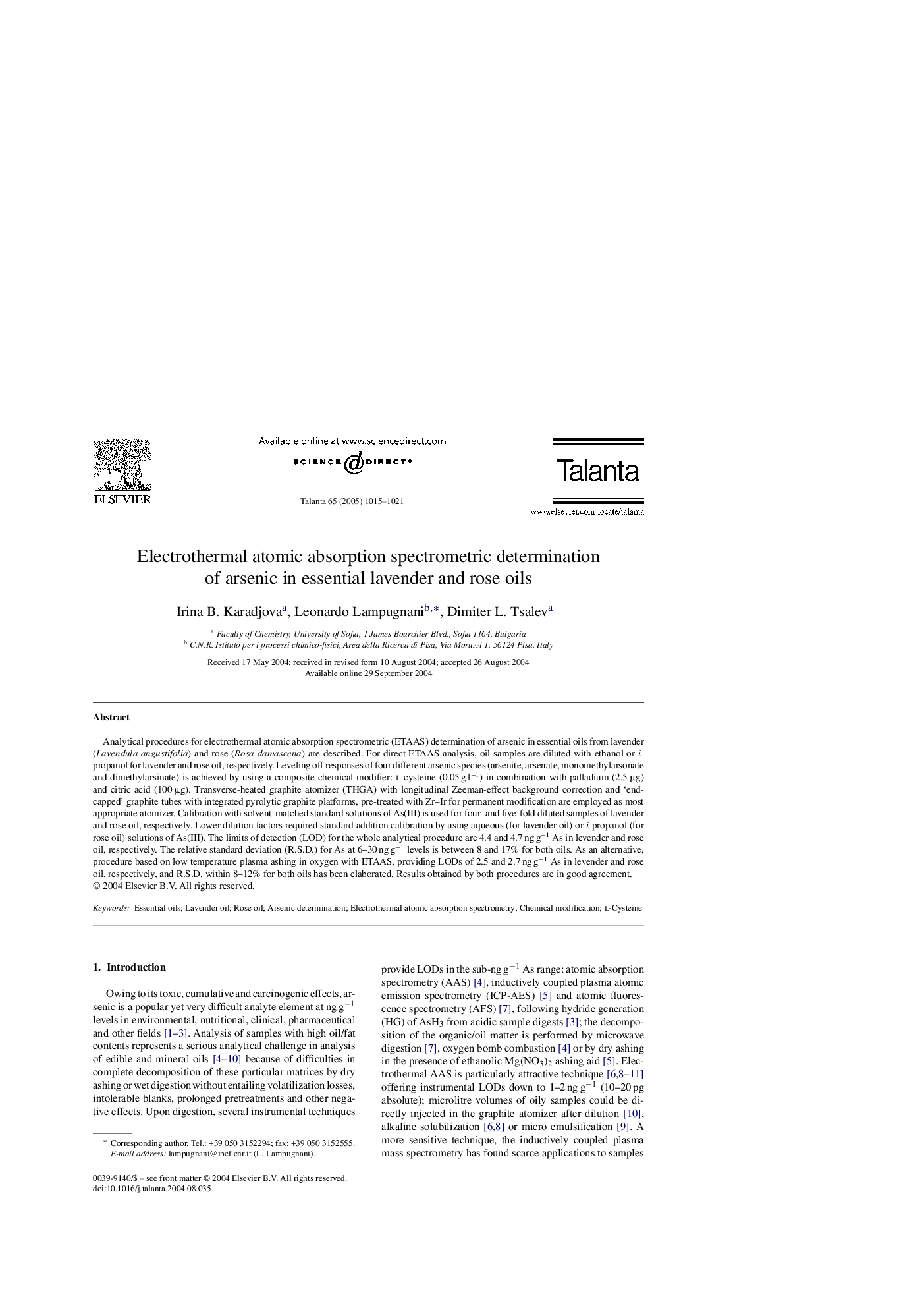| Article ID | Journal | Published Year | Pages | File Type |
|---|---|---|---|---|
| 10561518 | Talanta | 2005 | 7 Pages |
Abstract
Analytical procedures for electrothermal atomic absorption spectrometric (ETAAS) determination of arsenic in essential oils from lavender (Lavendula angustifolia) and rose (Rosa damascena) are described. For direct ETAAS analysis, oil samples are diluted with ethanol or i-propanol for lavender and rose oil, respectively. Leveling off responses of four different arsenic species (arsenite, arsenate, monomethylarsonate and dimethylarsinate) is achieved by using a composite chemical modifier: l-cysteine (0.05 g lâ1) in combination with palladium (2.5 μg) and citric acid (100 μg). Transverse-heated graphite atomizer (THGA) with longitudinal Zeeman-effect background correction and 'end-capped' graphite tubes with integrated pyrolytic graphite platforms, pre-treated with Zr-Ir for permanent modification are employed as most appropriate atomizer. Calibration with solvent-matched standard solutions of As(III) is used for four- and five-fold diluted samples of lavender and rose oil, respectively. Lower dilution factors required standard addition calibration by using aqueous (for lavender oil) or i-propanol (for rose oil) solutions of As(III). The limits of detection (LOD) for the whole analytical procedure are 4.4 and 4.7 ng gâ1 As in levender and rose oil, respectively. The relative standard deviation (R.S.D.) for As at 6-30 ng gâ1 levels is between 8 and 17% for both oils. As an alternative, procedure based on low temperature plasma ashing in oxygen with ETAAS, providing LODs of 2.5 and 2.7 ng gâ1 As in levender and rose oil, respectively, and R.S.D. within 8-12% for both oils has been elaborated. Results obtained by both procedures are in good agreement.
Keywords
Related Topics
Physical Sciences and Engineering
Chemistry
Analytical Chemistry
Authors
Irina B. Karadjova, Leonardo Lampugnani, Dimiter L. Tsalev,
